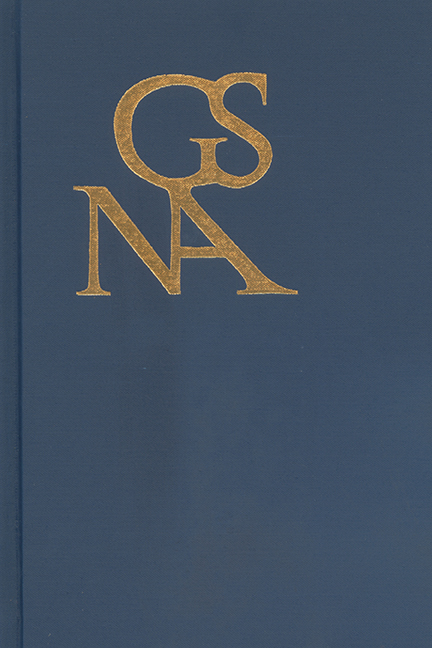Book contents
- Frontmatter
- Contents
- Building Bridges: Goethe's Fairy-Tale Aesthetics
- Goethe as Mystagogue
- Observing Neutrality, circa 1800
- Goethe, Faust, and Motherless Creations
- Impossible Ideals: Reconciling Virginity and Maternity in Goethe's Werther
- Kant, Calculus, Consciousness, and the Mathematical Infinite in Us
- The Classical Aesthetics of Schlegel's Lucinde
- Special Section on Visual Culture in the Goethezeit
- Book Reviews
Goethe as Mystagogue
Published online by Cambridge University Press: 25 February 2017
- Frontmatter
- Contents
- Building Bridges: Goethe's Fairy-Tale Aesthetics
- Goethe as Mystagogue
- Observing Neutrality, circa 1800
- Goethe, Faust, and Motherless Creations
- Impossible Ideals: Reconciling Virginity and Maternity in Goethe's Werther
- Kant, Calculus, Consciousness, and the Mathematical Infinite in Us
- The Classical Aesthetics of Schlegel's Lucinde
- Special Section on Visual Culture in the Goethezeit
- Book Reviews
Summary
GOETHE's LOVE OF MYSTERIES is no secret. Many of these arcana have already been explored in depth: we have multiple fine studies on alchemy, Hermeticism, Freemasonry, and phrenology and even an outstanding book by our late colleague Gloria Flaherty on shamanism. Thus, it is surprising how little of the great mountain of Goethe scholarship is devoted to the ultimate Geheimnis (mystery), especially since it is precisely the place where Goethe's two highest ideals, “das Ewig-Weibliche” (the Eternal Feminine) and the Spinozist concept of “Gott-Natur” (God-Nature), intersect. That point is the ancient mystery religions. I cannot begin to do justice to such a vast and complex topic but will attempt here to make at least a token payment on this major debt.
The curious lack of critical attention is all the more surprising given how pervasive the whole theme of mystery religion was within the intellectual life of Goethe's contemporaries. Even scientists thought in such terms, as evidenced by the frontispiece to Alexander von Humboldt's Ideen zu einer Geographie der Pflanzen (Ideas for a Geography of Plants, 1807), which he dedicated to Goethe: in Bertel Thorvaldsen's image, Apollo unveils Artemis/ Isis, before whose feet Goethe's scientific treatise Die Metamorphose der Pflanzen (1790) has been laid (fig. 1). When Humboldt wants to pay homage to both Goethe and Nature herself simultaneously, his reflex is to invoke Greek mystery religion.
Hermetic Discourse
This topic is difficult not just because it is huge but also because Goethe's understanding and treatment of it are so genuine: all communications about the Mysteries were to be veiled in enigmas, “sub aenigmate … proferre,” as Pico della Mirandola expressed it. The Mysteries were simultaneously exoteric and esoteric; they all offered not only public displays that were widely known but also secret revelations to small groups of initiates that were so well guarded we can only speculate about their precise nature today. Pico admonished anyone who would discuss the Mysteries to be “editos et non editos”—simultaneously published and unpublished (Wind 11).
- Type
- Chapter
- Information
- Goethe Yearbook 23 , pp. 19 - 40Publisher: Boydell & BrewerPrint publication year: 2016



